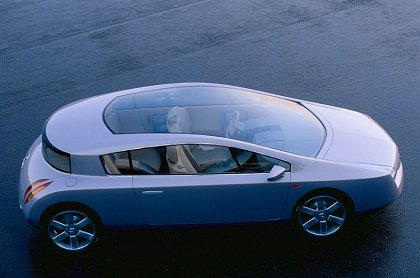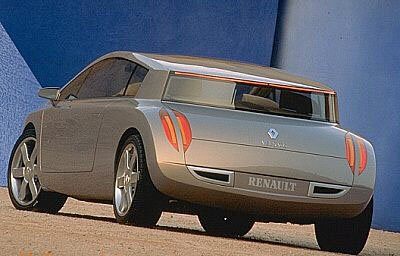1998 Renault Vel Satis
- Story Cars

- Oct 19, 2021
- 2 min read
The Renault Vel Satis is a dramatically styled four-seat, high-technology coupe de ville with a windshield that extends almost to the extreme rear of the roof. Jean-Francois Venet, the Executive Chief Designer for Renault's large cars, said the Vel Satis embraces several elements that indicate possible future design trends. These include its frontal styling with twin air intakes, a prominent Renault badge position, angular flanks, and distinctive "shoulder" treatment toward the rear and below the C-pillar. Renault sent its designers to London, Milan, and other major cities to bring back fresh ideas about architecture, furniture, fashion, and textiles that could be incorporated in Vel Satis.
The Vel Satis is also a technology demonstrator. It's two enormous, 1.78-m (5.8-ft) carbon-fiber doors open electrohydraulically on a patented hinge system that moves them out and forward. The result is that, at the maximum arc, they extend no further than the doors of the little Renault Twingo hatchback but allow easy access to the Vel Satis' interior. The doors open at the touch of a pressure pad. The hood, which covers a newly developed, naturally aspirated, 3.0-L V6 gasoline engine, is also powered by the clamshell trunk lid. This theme of powered systems extends to the interior, with the seats incorporating laterally moving headrests to allow passengers to sleep more comfortably.
With its huge glass area, the car's interior is very light, but Renault admits that this is not viable for production. However, Venet explains that future Renault models will make increased use of glass, with the next-generation Espace MPV (multi-purpose vehicle) particularly benefiting from the philosophy.
The steering wheel has a stationary hub with built-in controls; only the wheel's rim moves. The dashboard incorporates "jewel trays" instead of a conventional glove box. These swing out, with one containing an alphanumeric keyboard for the operation of a PC. A telematic travel system uses a Pioneer DVD. Navigation and guidance information can be complemented by cultural information on an area as it is passed through. Neon lighting is used for the interior and the rear lights, while the Valeo headlamps have an advanced optical bar system that Renault says has aspects in common with lighthouse technology. The car's tires are a development of Michelin's vertically anchored PAV technology.
Designed to celebrate Renault's one-hundredth anniversary, Vel Satis is a luxury four-seater coupe avant-garde in its architecture and design. As with its predecessor Initiale, its concept embraces traditional conventions of luxury motoring with fond respect while encapsulating that free-spirited creativity that is the very essence of Renault. Maintaining the theme, a production Vel Satis was launched in 2002.
Features
Continuous windscreen and glass roof unit
A hands-free entry card opens doors automatically
1,780mm-long side doors with twin-stage parallel opening
No center pillar
DVD system and enhanced GPS navigation offering guidance and tourist information
Sources: www.sae.org; conceptcar.co.uk
Images Source: Renault

%20(4)_edited.png)
















































Comments